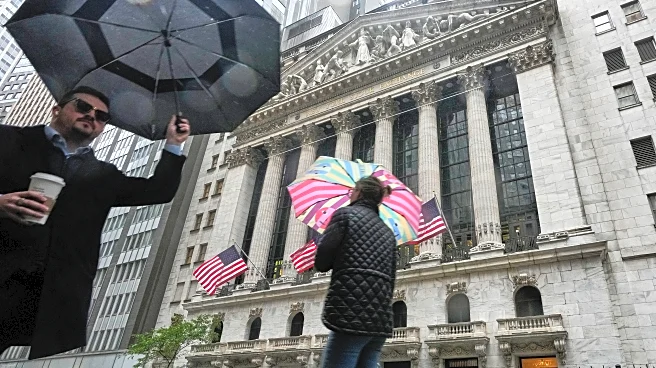What's Happening?
Gold prices have surged to nearly $4,000 per ounce, marking a significant rally in 2025. This increase is driven by a combination of geopolitical risks, strong central bank gold-buying, and economic uncertainties. The rally has seen gold prices rise over
50% year-to-date, making it the strongest year for gold since 1979. Factors such as safe-haven flows, de-dollarization, and low real yields have contributed to this trend. Major gold-mining stocks and funds have also seen significant gains, although rising costs and market volatility have tempered some of these increases.
Why It's Important?
The surge in gold prices reflects broader economic and geopolitical dynamics, including investor concerns over global stability and monetary policy shifts. As a traditional safe-haven asset, gold's rise indicates a lack of confidence in fiat currencies and a hedge against inflation and economic downturns. This trend impacts various stakeholders, from individual investors seeking security to central banks diversifying reserves. The rally also affects industries related to gold mining and trading, highlighting the interconnectedness of global markets and the influence of macroeconomic factors on commodity prices.
What's Next?
Analysts predict continued volatility in gold prices, with potential for further increases if geopolitical tensions persist or if central banks continue to buy gold. However, there is also caution about possible corrections if economic conditions stabilize or if monetary policies shift unexpectedly. Investors and market participants will closely monitor central bank actions, inflation data, and geopolitical developments to gauge future trends in gold prices.















